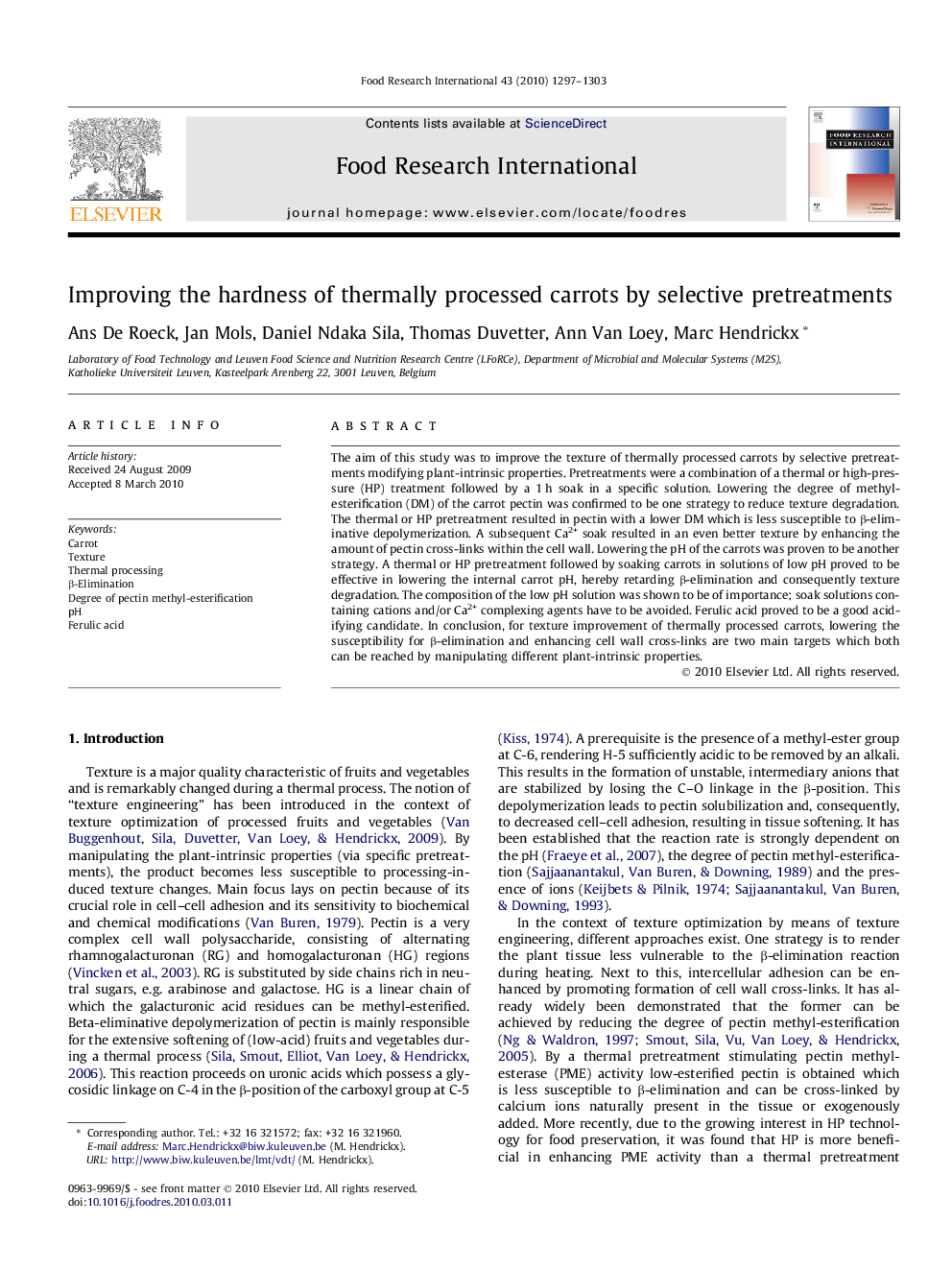| Article ID | Journal | Published Year | Pages | File Type |
|---|---|---|---|---|
| 4562595 | Food Research International | 2010 | 7 Pages |
Abstract
The aim of this study was to improve the texture of thermally processed carrots by selective pretreatments modifying plant-intrinsic properties. Pretreatments were a combination of a thermal or high-pressure (HP) treatment followed by a 1 h soak in a specific solution. Lowering the degree of methyl-esterification (DM) of the carrot pectin was confirmed to be one strategy to reduce texture degradation. The thermal or HP pretreatment resulted in pectin with a lower DM which is less susceptible to β-eliminative depolymerization. A subsequent Ca2+ soak resulted in an even better texture by enhancing the amount of pectin cross-links within the cell wall. Lowering the pH of the carrots was proven to be another strategy. A thermal or HP pretreatment followed by soaking carrots in solutions of low pH proved to be effective in lowering the internal carrot pH, hereby retarding β-elimination and consequently texture degradation. The composition of the low pH solution was shown to be of importance; soak solutions containing cations and/or Ca2+ complexing agents have to be avoided. Ferulic acid proved to be a good acidifying candidate. In conclusion, for texture improvement of thermally processed carrots, lowering the susceptibility for β-elimination and enhancing cell wall cross-links are two main targets which both can be reached by manipulating different plant-intrinsic properties.
Related Topics
Life Sciences
Agricultural and Biological Sciences
Food Science
Authors
Ans De Roeck, Jan Mols, Daniel Ndaka Sila, Thomas Duvetter, Ann Van Loey, Marc Hendrickx,
